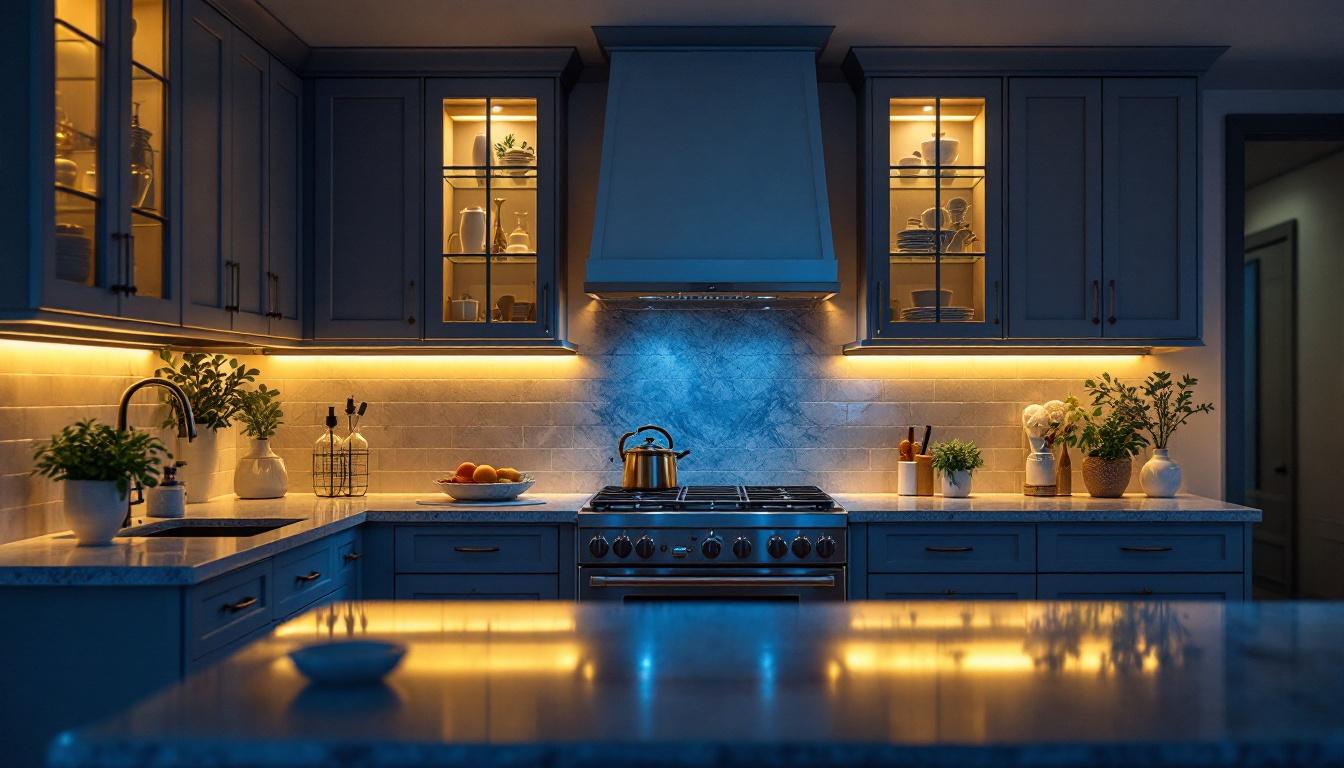
Motion sensor technology has revolutionized outdoor lighting, providing both safety and convenience. By detecting movement, these sensors activate lights only when needed, reducing energy consumption and enhancing security. However, understanding the intricacies of this technology is essential for lighting contractors to avoid common pitfalls in their projects.
There are several types of motion sensors available, each with its unique advantages and disadvantages. Passive Infrared (PIR) sensors are the most common, utilizing heat emitted by objects to detect motion. These sensors are ideal for outdoor areas where heat signatures can easily be detected, such as driveways and pathways. They are particularly effective in residential settings, where they can provide peace of mind by illuminating dark areas when someone approaches.
Another type is the Microwave sensor, which emits microwave pulses to detect movement. These sensors can cover larger areas and are less affected by environmental factors, making them suitable for expansive outdoor spaces. However, they can sometimes be triggered by non-human movement, such as animals or swaying branches. This sensitivity can be a double-edged sword; while it ensures comprehensive coverage, it may also lead to unnecessary light activation, which can be disruptive in quiet neighborhoods.
When selecting a motion sensor for a lighting project, it is crucial to consider the specific requirements of the area being illuminated. Factors such as the size of the space, the types of activities taking place, and potential obstructions must all be taken into account. Choosing the wrong sensor can lead to inadequate coverage or unnecessary activations, resulting in wasted energy and frustration for the client. Additionally, understanding the layout of the environment, including the placement of walls, trees, and other structures, can significantly influence the effectiveness of the motion sensor.
Furthermore, it is essential to consider the sensitivity settings of the motion sensors. Many modern sensors come with adjustable sensitivity levels, allowing contractors to fine-tune their responsiveness based on the specific environment. For instance, in areas with frequent animal activity, a lower sensitivity setting may be beneficial to prevent false alarms. Conversely, in high-traffic zones, a higher sensitivity may be warranted to ensure that the lights activate promptly when needed. This level of customization can greatly enhance the user experience, making the outdoor space both functional and secure.
Even experienced lighting contractors can make mistakes when it comes to outdoor lighting projects. Recognizing these common errors can help avoid costly rework and ensure client satisfaction.
One of the most frequent mistakes is failing to ensure adequate coverage for the entire area. This often occurs when sensors are positioned incorrectly or when the detection range is not considered. It is essential to map out the area and determine the optimal placement of lights and sensors to ensure comprehensive illumination.
Additionally, considering the height at which sensors are mounted can significantly impact their effectiveness. Sensors placed too high may not detect lower movements, while those mounted too low may trigger unnecessarily. Striking the right balance is key to achieving effective coverage.
Furthermore, the type of lighting used can also influence coverage. For example, using narrow beam lights in open spaces may lead to dark spots, while broad beam lights can create a more uniform illumination. It’s important to choose fixtures that complement the layout of the area being lit, ensuring that every corner is adequately illuminated without creating harsh shadows or overly bright spots.
Outdoor environments are unpredictable, and ignoring factors such as weather conditions and landscaping can lead to lighting failures. For example, heavy rain or snow can obstruct sensor functionality, while overgrown shrubs may block the sensor’s view. It is vital to assess the environment thoroughly and make adjustments accordingly to ensure reliable performance.
Moreover, seasonal changes can affect how motion sensors operate. For instance, during winter, snow accumulation can hinder sensor detection. Planning for these variations will help maintain consistent lighting performance throughout the year.
In addition to weather, the surrounding flora and fauna should also be taken into account. Certain plants may grow rapidly and obstruct light fixtures or sensors, while animals might trigger sensors unexpectedly. Regular maintenance and adjustments to the lighting setup can mitigate these issues, ensuring that the outdoor lighting remains functional and effective regardless of environmental changes.
Proper installation is crucial for the success of outdoor lighting projects. Following best practices can help ensure that motion sensors function as intended and provide the desired benefits.
When installing motion sensors, positioning and angling are critical. Sensors should be directed toward the area that needs illumination, with a clear line of sight. This may involve adjusting the angle of the sensor to account for potential obstructions, such as trees or fences.
Additionally, it is beneficial to conduct a test run after installation. This allows contractors to observe the sensor’s performance and make any necessary adjustments before completing the project. A little extra time spent on testing can prevent future issues and enhance client satisfaction. It’s also wise to consider the height at which the sensors are mounted, as this can significantly impact their detection range. Mounting sensors too high may limit their ability to detect motion effectively, while positioning them too low could lead to false triggers from small animals or passing pedestrians.
Integrating motion sensors with other outdoor lighting systems can enhance functionality and efficiency. For instance, connecting sensors to smart home systems allows for remote control and monitoring, providing added convenience for clients. This integration can also enable features such as scheduling, where lights can be programmed to operate at specific times, further optimizing energy use.
However, it is essential to ensure compatibility between systems. Not all sensors will work seamlessly with every lighting setup, so thorough research and planning are necessary before integration. Furthermore, considering the use of energy-efficient LED lights in conjunction with motion sensors can lead to significant energy savings and a reduced carbon footprint. Clients will appreciate the dual benefits of enhanced security and lower utility bills, making this a compelling selling point for contractors. Additionally, educating clients on the maintenance of these systems, such as cleaning the sensors and checking for firmware updates, can prolong the life and effectiveness of their outdoor lighting solutions.
In today’s environmentally conscious market, energy efficiency and sustainability are more important than ever. Lighting contractors must consider these factors when planning outdoor lighting projects.
LED lights are an excellent choice for outdoor lighting due to their energy efficiency and longevity. Compared to traditional incandescent bulbs, LEDs consume significantly less energy and have a much longer lifespan. This not only reduces energy costs for clients but also minimizes the frequency of replacements, contributing to sustainability efforts.
Moreover, combining LED technology with motion sensors can create an even more efficient lighting system. By ensuring that lights are only activated when necessary, contractors can help clients save on energy bills while reducing their carbon footprint.
Contractors can also promote sustainable practices by advising clients on the importance of proper maintenance and usage of outdoor lighting systems. Educating clients about the benefits of energy-efficient lighting and how to optimize their systems can lead to long-term savings and environmental benefits.
Furthermore, recommending the use of solar-powered motion sensor lights can be an excellent option for clients looking to minimize their impact on the environment. These lights harness solar energy during the day, providing illumination at night without relying on traditional power sources.
Effective communication with clients is vital throughout the lighting project. Setting clear expectations from the outset can prevent misunderstandings and ensure a smoother process.
Before starting a project, it is essential to have a detailed discussion with clients about their goals and expectations. Understanding their specific needs will help tailor the lighting design to meet their requirements effectively. This includes discussing the primary purpose of the lighting, whether for security, aesthetics, or functionality.
Additionally, it is beneficial to provide clients with a clear timeline and outline of the project. Transparency about what to expect can help build trust and foster a positive working relationship.
Once the project is complete, providing clients with maintenance guidance is crucial for the longevity of the lighting system. This includes information on how to clean sensors, check for obstructions, and troubleshoot common issues. Offering ongoing support can enhance client satisfaction and encourage repeat business.
Furthermore, discussing the importance of regular inspections can help ensure that the lighting system continues to function optimally. Clients should be aware that even the best systems require occasional attention to maintain their performance.
Outdoor lighting projects with motion sensors offer numerous benefits, from enhanced security to energy savings. However, avoiding costly mistakes requires a thorough understanding of the technology, careful planning, and effective communication with clients. By considering the factors discussed in this article, lighting contractors can ensure successful projects that meet client expectations and contribute to a more sustainable future.
Ultimately, the key to success lies in attention to detail and a commitment to quality. By prioritizing these elements, contractors can build a reputation for excellence in outdoor lighting, paving the way for future opportunities and satisfied clients.
Ready to elevate your outdoor lighting projects with the best in motion sensor technology? At LumenWholesale, we provide contractors like you with spec-grade lighting solutions that blend quality, affordability, and convenience. Say goodbye to inflated markups and hello to our extensive selection of reliable, high-performance lighting at unbeatable wholesale prices. Plus, with free shipping on bulk orders, you can stock up on premium lighting without the worry of hidden fees. Don’t compromise on your lighting projects—choose LumenWholesale for the perfect mix of efficiency and value. Wholesale Lighting at the Best Value is just a click away.

Discover how kitchen LED ceiling lights can enhance your business profits with our comprehensive guide tailored for lighting contractors.

Discover expert insights and practical tips on under cabinet ribbon lighting tailored for lighting contractors.

Discover how Leviton Manufacturing Co Inc empowers lighting contractors with innovative solutions, cutting-edge technology, and unparalleled support, driving success in the ever-evolving lighting industry..

Discover how Light Panel LED technology can transform your lighting solutions with energy efficiency, cost savings, and enhanced brightness.